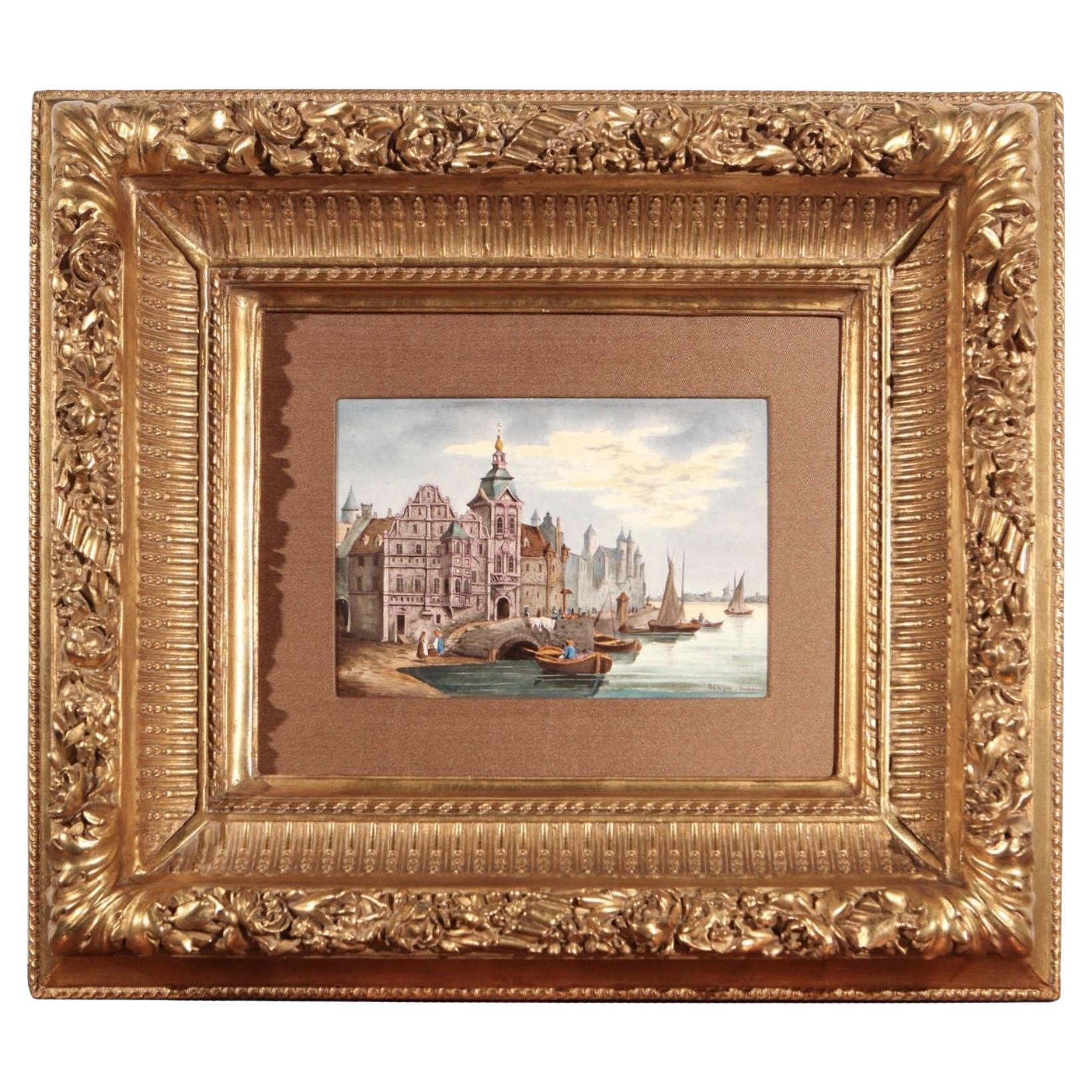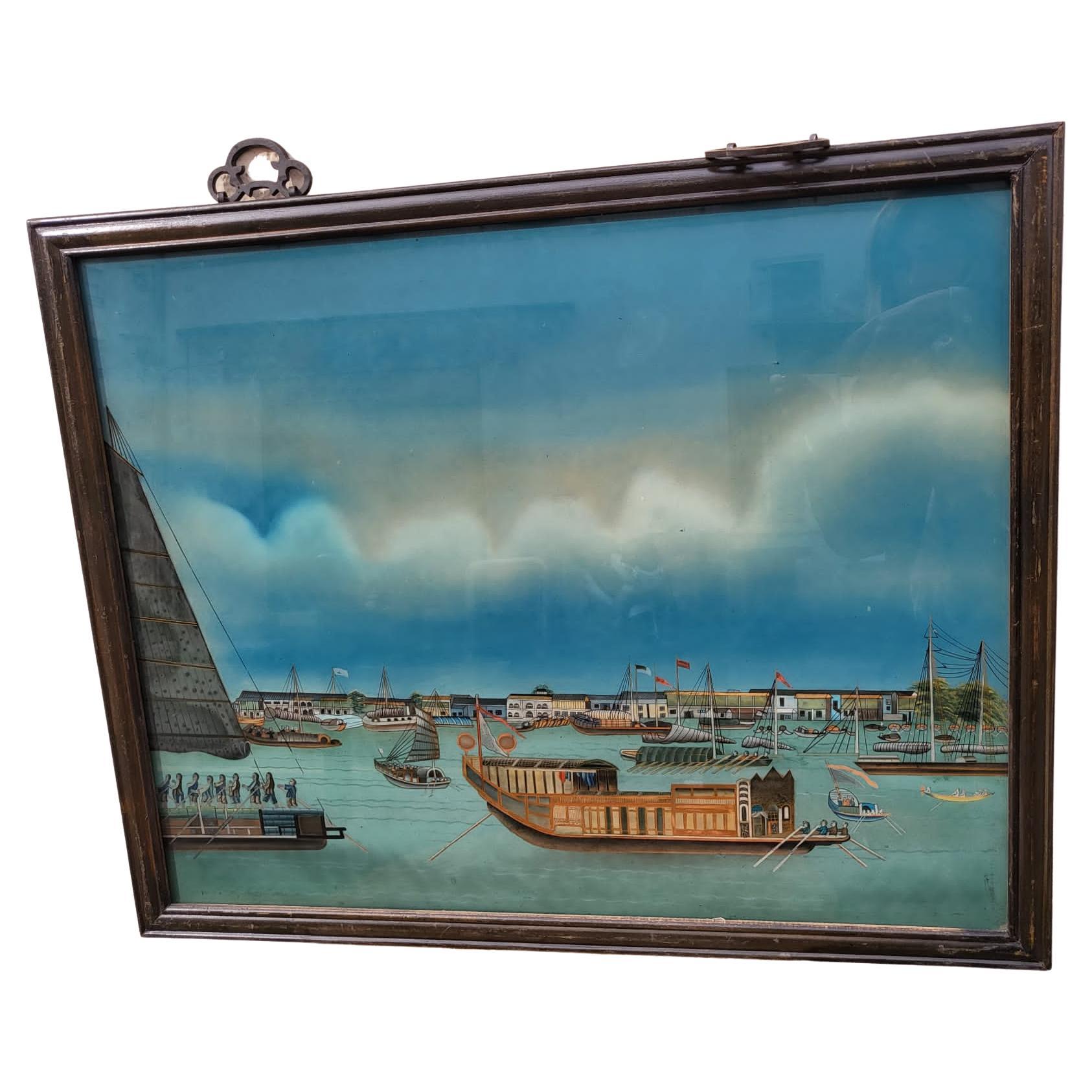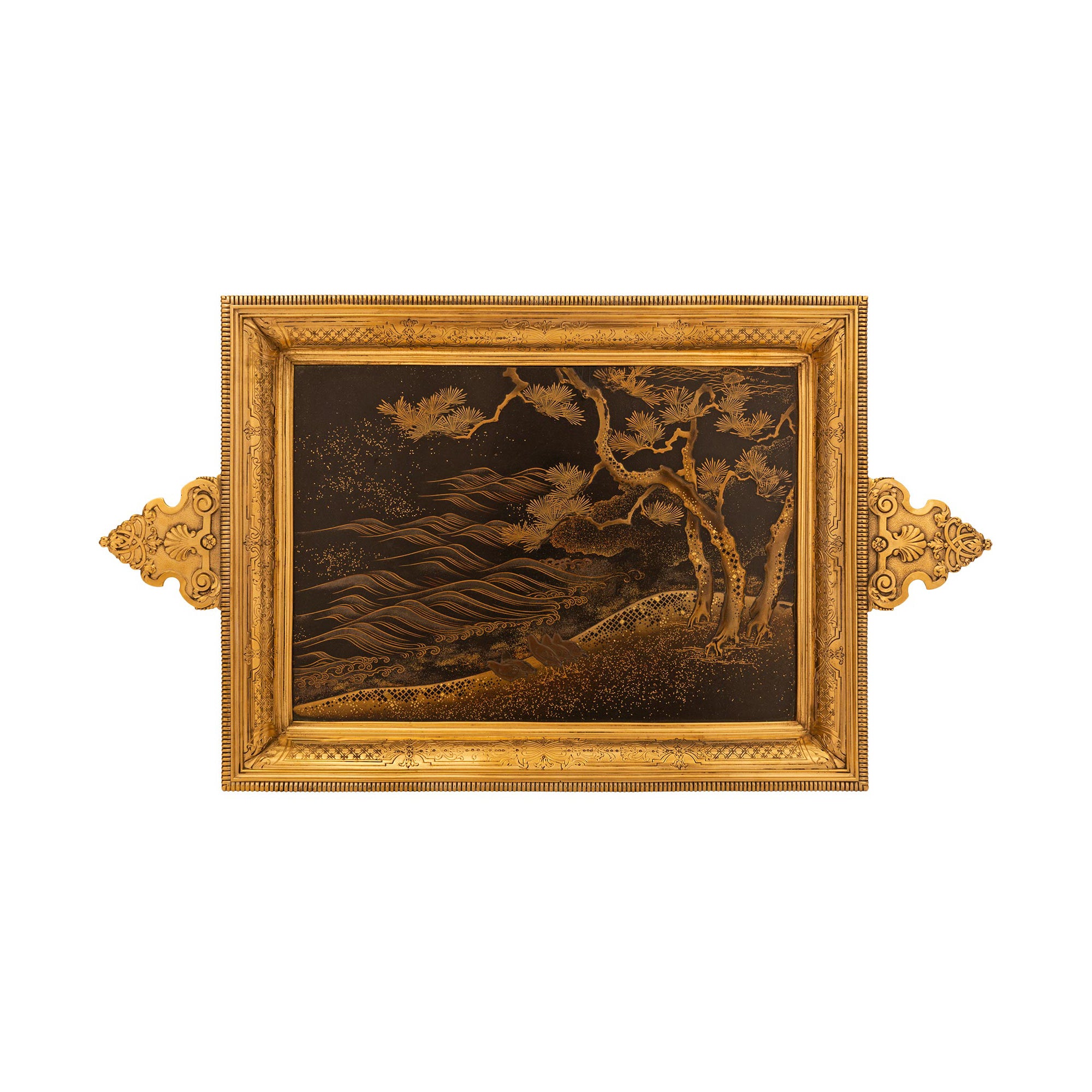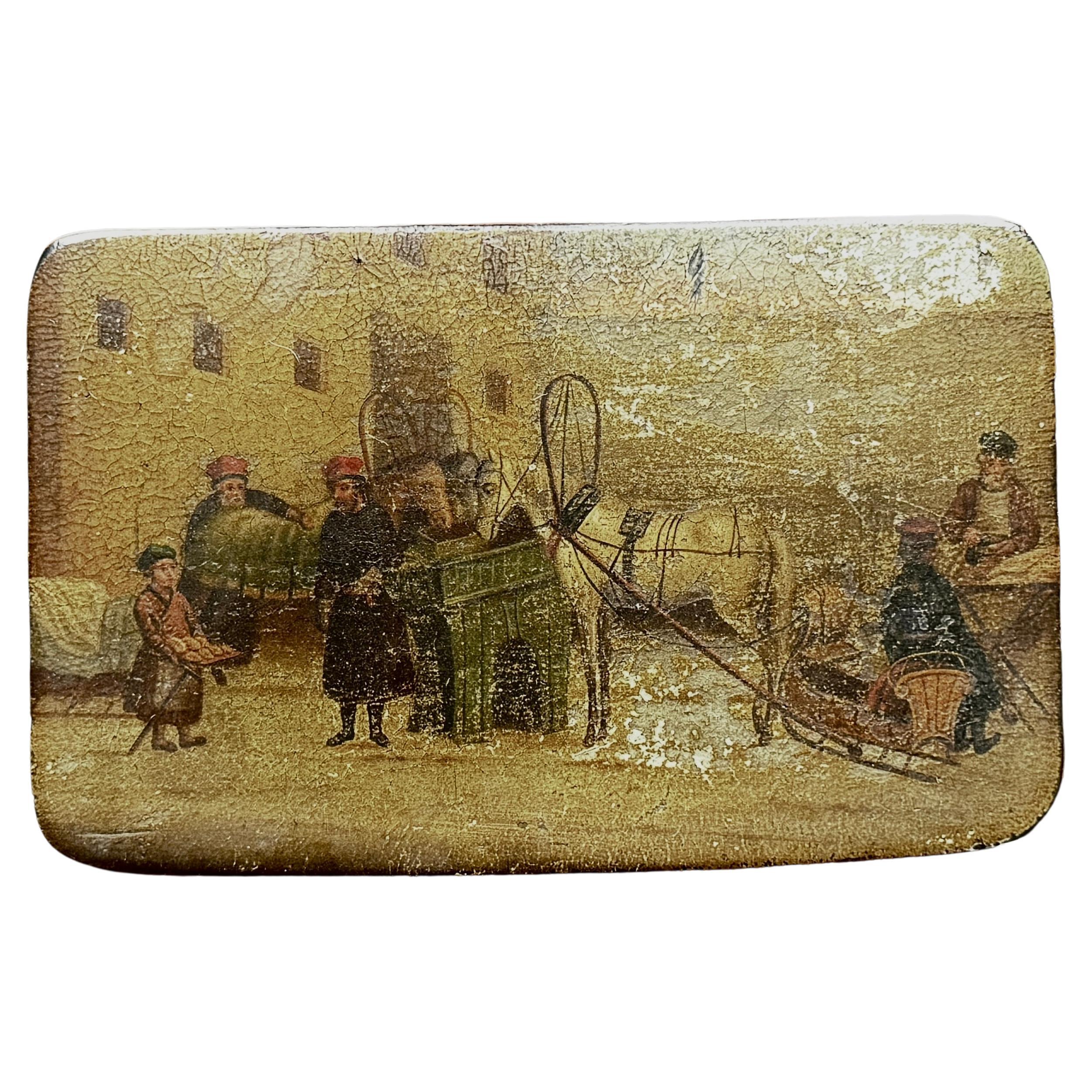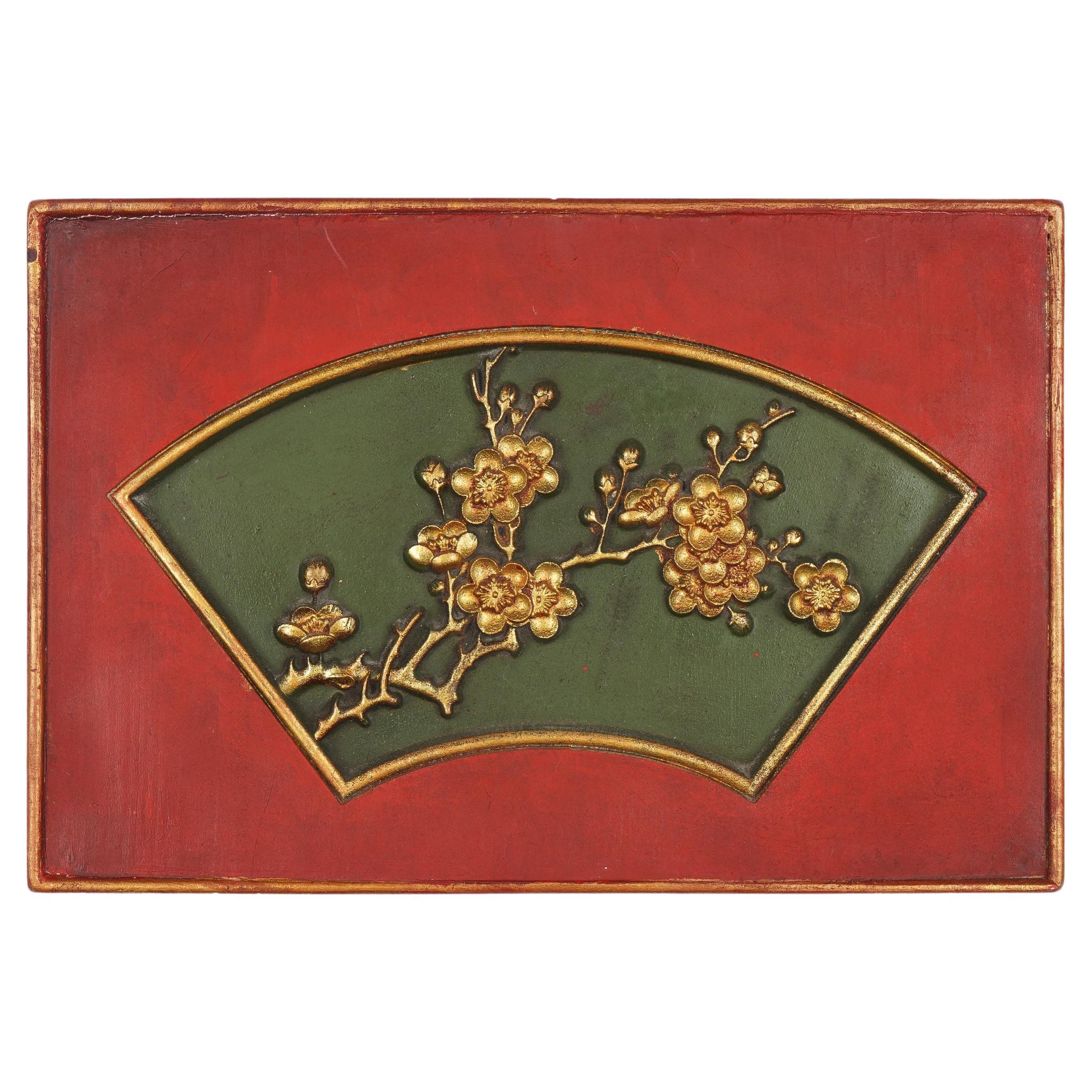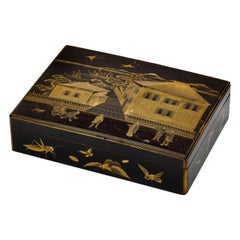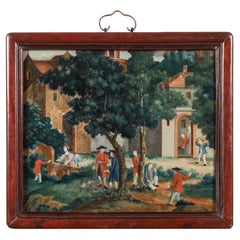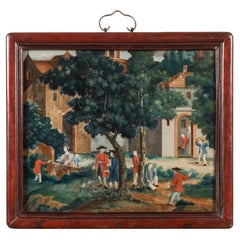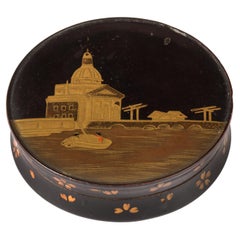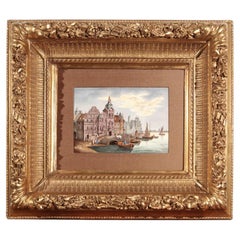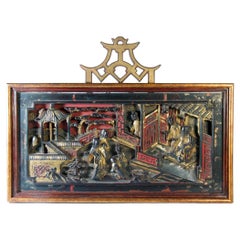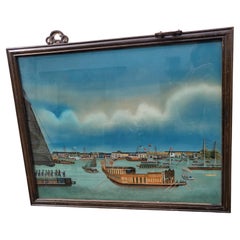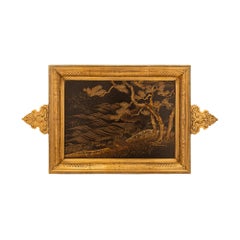Items Similar to Extremely Japanese Rare Lacquer Plaque Depicting Russian St. Petersburg
Want more images or videos?
Request additional images or videos from the seller
1 of 3
Extremely Japanese Rare Lacquer Plaque Depicting Russian St. Petersburg
$101,842.20per item
£75,800.85per item
€85,000per item
CA$139,498.36per item
A$155,152.63per item
CHF 81,015.88per item
MX$1,888,042.45per item
NOK 1,034,696.43per item
SEK 970,362.71per item
DKK 647,075.32per item
Quantity
Shipping
Retrieving quote...The 1stDibs Promise:
Authenticity Guarantee,
Money-Back Guarantee,
24-Hour Cancellation
About the Item
An important Japanese lacquer Maki-É Panel Depicting St. Petersburg on the River Neva, with the winter palace on the left and the academy of science on the right, 18th century.
Nagasaki, 1780-1800
In black lacquer on copper, the front decorated in maki-é, the back inscribed, Vue Perspective des Bords de la Neva en descendant la Rivière entre le Palais d'hyver de sa Majesté Impériale et les batiments de l'Académie des Sciences à St Petersburg in gold and inlaid with flowers in mother of pearl.
Measures: H 23 x W 39 cm
The present plaque is identical to one in the Museum of Japanese History in Sakura and another one in the Museum of Peter the Great in St. Petersburg. (see: Oliver Impey & Christiaan Jörg, Japanese Export Lacquer, 1580-1850, p. 52-53)
This last one was given to Catherine the Great in 1794 by the Swedish medical doctor Johan Arnold Stutzer who had served with the VOC in Deshima in 1787-1788. Apparently, such plaques were not unique and may have been made in several copies. This was certainly the case with the smaller lacquer oval portrait medallions (see for instance Uit Verre Streken, June 2017, no. 62)
The scene of St. Petersburg was copied from an optical print taken by Stutzer to Japan, as shown by Yasumasa Oka of the Kobe City Museum. Stutzer in his diary writes: “I am the first to bring them (i.e. the Japanese) original pictures such as a view of St Petersburg and of Rudolf XV on horseback and try to have them made (in lacquer). According to the Japanese, it is the first time that these two pictures will be copied. Other products that I also ordered, for example, pictures of sea battles, are also appreciated as absolute masterpieces”.
For two lacquered plaques depicting the sea battle of Dogger Bank in 1781 between the Dutch and the English navies, see Uit Verre Streken, December 2013, nr. 39 and March 2015, nr 56. Johan Strutzer at the same time also presented six beautiful Japanese glass telescopes to Catherine the Great of Russia, like the two Japanese glass telescopes illustrated in Uit Verre Streken, March 2015, item 59 and 60 and the one in the Kobe City Museum (illustrated in: Japan Envisions the West, 16th-19th Century Japanese Art from the Kobe City Museum, plate 98).
- Dimensions:Height: 9.85 in (25 cm)Width: 15.36 in (39 cm)Depth: 0.2 in (5 mm)
- Materials and Techniques:
- Place of Origin:
- Period:
- Date of Manufacture:1780-1800
- Condition:Wear consistent with age and use.
- Seller Location:Amsterdam, NL
- Reference Number:1stDibs: LU5458220879022
About the Seller
5.0
Recognized Seller
These prestigious sellers are industry leaders and represent the highest echelon for item quality and design.
Established in 1985
1stDibs seller since 2020
23 sales on 1stDibs
Typical response time: 2 hours
- ShippingRetrieving quote...Shipping from: Amsterdam, Netherlands
- Return Policy
Authenticity Guarantee
In the unlikely event there’s an issue with an item’s authenticity, contact us within 1 year for a full refund. DetailsMoney-Back Guarantee
If your item is not as described, is damaged in transit, or does not arrive, contact us within 7 days for a full refund. Details24-Hour Cancellation
You have a 24-hour grace period in which to reconsider your purchase, with no questions asked.Vetted Professional Sellers
Our world-class sellers must adhere to strict standards for service and quality, maintaining the integrity of our listings.Price-Match Guarantee
If you find that a seller listed the same item for a lower price elsewhere, we’ll match it.Trusted Global Delivery
Our best-in-class carrier network provides specialized shipping options worldwide, including custom delivery.More From This Seller
View AllA Japanese export lacquer box with depiction of the Grand Hotel, Yokohama
Located in Amsterdam, NL
Meiji period, circa 1873-1887
The black lacquered box decorated in maki-e and hiramaki-e gold, with on the lid a European style building complex and several Japanese and European figures walking along a street in the foreground. The sides are finely decorated with several insects and the inside with several compartments and nashiji decoration.
H. 7.4 x W. 29 x D. 25.7 cm
After the Americans forced Japan to open their harbours to the outside world and take part in international treaty and trade around the mid 19th century, the formerly feudal society rapidly changed. Japan was now focussing on an industrial future. One of the major international ports was Yokohama with its foreign embassies and warehouses - which attracted a great number of visitors of all sorts. For the higher society visiting Japan for the first time a new and ‘Western’ hotel had to be realised; hence the construction of The Grand Hotel on Kaigandori.
The hotel was opened on August 16, 1873 (Meiji 6) and was soon considered the height of Western culture and elegance in Japan. The building probably depicted on this box, designed by American architect Richard P. Bridgens (リチャード・ブリジェンス, 1819 -1891), is the original hotel...
Category
Antique 19th Century Japanese Lacquer
Materials
Gold
A Chinese 'European subject' reverse glass painting after an English print
Located in Amsterdam, NL
Canton, late 18th century
In original hardwood frame with ruyi-shaped metal mount for suspension.
H. 38.7 x W. 44.3 cm (incl. frame)
H. 31.8 x W. 37.5 cm (image)
Chinese reverse glass paintings for export are known since mid 18th century. By the 1780's the copying of European, mainly English, engravings came into vogue in Chinese paintings on glass...
Category
Antique Late 18th Century Chinese Paintings
Materials
Glass
A Chinese export reverse-glass painting after an English print in original frame
Located in Amsterdam, NL
Canton, late 18th century
In original hardwood frame with ruyi-shaped metal mount for suspension.
H. 38.7 x W. 44.3 cm (incl. frame)
H. 31.8 x W. 37.5 cm (image)
Chinese reverse glass paintings for export are known since mid 18th century. By the 1780's the copying of European, mainly English, engravings came into vogue in Chinese paintings on glass...
Category
Antique Late 18th Century Chinese Chinese Export Paintings and Screens
Materials
Glass, Hardwood
A small Japanese export lacquer circular box with a depiction of the Muiderpoort
Located in Amsterdam, NL
Nagasaki, Edo period, 1st half 19th century
Of circular form decorated in gold hiramaki-e on a black-lacquered ground, the lid depicts the Muiderpoort, a city gate of Amsterdam, aft...
Category
Antique 19th Century Japanese Lacquer
Materials
Lacquer
Extremely Fine and Rare 17th-Century Japanese Export Lacquer and Inlaid Cabinet
Located in Amsterdam, NL
An extremely fine and important Japanese lacquer cabinet with gilt-copper mounts for the European market
Edo period, late 17th century
The pictorial style decorated rectangular...
Category
Antique Late 17th Century Japanese Lacquer
Materials
Brass
Price Upon Request
Free Shipping
Japanese Colonial Nagsaki Lacquer Box with Depiction of Amsterdam, 1830-1840
Located in Amsterdam, NL
An important Japanese lacquer box with a view of The 'Nieuwe Stadsherberg Van Amsterdam
Nagasaki, Edo-period, 1830-1840
The black lacquered wood box, decorated in gold and inla...
Category
Antique Early 19th Century Japanese Decorative Boxes
Materials
Mother-of-Pearl, Wood
$29,953 / item
Free Shipping
You May Also Like
Late 19th Century Porcelain Plaque of Port in Amsterdam
By J. Schuler 1
Located in Los Angeles, CA
A late 19th century porcelain plaque of Port de Piche in Amsterdam. It is signed J Schuler. Made by H&B at the Choisy-le-Roi factory. Original elaborately hand-carved wood and gesso ...
Category
Antique Late 19th Century French Renaissance Revival Paintings
Materials
Porcelain
A Highly Decorative Chinese Deep-Relief Gilt & Lacquer Wood Panel 19th Century
Located in Ottawa, Ontario
A CHINESE DEEP-RELIEF GILT & LACQUER
WOOD PANEL
19th Century.
Depicting a court scene carved in deep relief, red and black lacquer highlighted with gold later framed. Extremely col...
Category
Antique Early 19th Century Chinese Chinese Export Decorative Art
Materials
Wood
Fixé Sous Verre, View of a Port in Asia, 20th Century
Located in MARSEILLE, FR
Large "Fixé sous verre", painting under glass representing a port scene in China in the background, with boats with different flags, rowers, all life o...
Category
20th Century Chinese Chinese Export Paintings
Materials
Glass
French 19th Century Meiji Period Japanese Lacquer And Ormolu Tray; Bointaburet
Located in West Palm Beach, FL
A very unique and highly detailed French 19th century Meiji period Japanese Lacquer and Ormolu Tray, stamped Bointaburet A Paris. This exquisite rectangular tray was fashioned with J...
Category
Antique 19th Century French Centerpieces
Materials
Ormolu
Late 19th - Early 20th Century Russian Lacquered Paper Mache Snuff Box
Located in San Francisco, CA
Late 19th - Early 20th Century Russian Lacquered Paper Mache Snuff Box
By The Lukutun Factory
5.25" x 3.5" x 1.5"
Category
Antique 19th Century Snuff Boxes and Tobacco Boxes
Materials
Wood, Paper
Chinese rectangular wood panel with a carved gilt cartouche, 1800's
Located in Kenilworth, IL
Rectangular wood panel painted in red lacquer with an arched inset featuring a shallow carved and gilt cartouche on a green painted ground.
China, Qing Dynasty, 19th century.
Category
Antique 19th Century Wall-mounted Sculptures
Materials
Wood, Giltwood, Lacquer
More Ways To Browse
Japanned English Furniture
Antique St Petersburg Russia
Japanese Dog
Japanese Wall Plate
Antique Japanese Wall Panels
Antique Japanese Black Lacquer Panels
Antique Swedish Copper
W Arnold
Voc Plate
Dutch 18th Century Inlaid Furniture
Copper Dog
Russia Winter Palace
Black Lacquer And Mother Of Pearl Panels
Japanese Lacquer Plaque
Japanese Wall Plaque
Mother Of Pearl Wall Panels
Dog Bank
Nagasaki Lacquer
